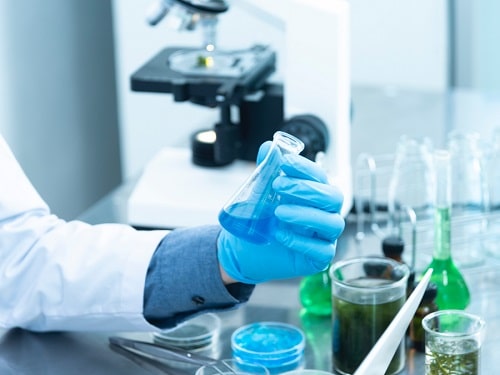With lab-grown, cultivated meat looking as though it could tackle environmental and animal welfare issues, we look at the Dutch origins of this new produce, its benefits, and how tech has played an important role in creating the product.
What Is ‘Cultivated Meat’?
Cultivated meat / cultured meat is real meat, but not taken from as living animal that has been slaughtered. Instead, it is made from collected animal cells (fat and muscle stem cells) which are then grown in vitro (in the lab) and shaped into familiar forms of edible flesh. The process can take two to three weeks to complete.
The Issues
The issues of continuing down the path of slaughtering 80 billion animals per year for meat are:
– Animal suffering and the ethical perspective.
– Livestock produce 14.5 per cent of global greenhouse gasses (UN figures).
– A massive 26 per cent of the earth’s terrestrial surface being taken up by livestock grazing.
– Livestock using 8 per cent of global freshwater.
– Human population growth is making the above numbers unsustainable.
Benefits
The benefits of cultivated meat are:
– Satisfying the appetite for protein in human diets without the farming or animal cruelty issues.
– Reducing the risk of viruses being transferred from farm animals to humans.
– Having complete control of the nutrition profile.
– No waste in production and less need for the quantity and expense of raw materials compared to the meat industry (and plant-based meat industries) and, therefore, less environmental impact in producing the raw materials.
– Sustainability.
Challenges to the Growth of Cultivated Meat Adoption
Although the cultivated meat sector is growing, its faces many challenges in achieving the wider adoption of cultivated meat products. For example:
– High production costs which may be passed on in high prices.
– Difficulty in scaling-up (it is currently small-scale production).
– Ethical concerns. For example, some have questioned the ethical stance of the biggest producers (SuperMeat, Future Meat Technologies) and their investors. Also, a lack of packaging disclosures, the possible use of modified yeast cells, and lack of knowledge about the long-term health and environmental consequences of eating the cultivated meat have all been discussed as ethical concerns.
– Opposition by the meat industry and its supply chain and farmers who have a lot to lose if cultivated meat is accepted as a viable and preferred alternative to their products.
– Food regulations.
– Public perceptions of and knowledge about cultivated meat (mainly concerns about safety). For example, Food Standards Agency Research (UK – conducted by Ipsos Mori, Dec 2021/Jan2022) shows that although 78 per cent of people have heard of cultivated meat, a quarter of people would only try it if they knew it was safe, and 23 per cent said they would try it if they thought it was properly regulated.
– The need for fat and salt to get a similar taste profile to other meat products, making it a less healthy options.
Origins
Cultivated meat was first produced as far back as 1948 in the Netherlands by Dutch medical school student researcher, Willem van Eelen. Fast-forward to 2005 and Van Eelen (with others) convinced the Dutch government to fund research into cellular agriculture. From this came Dutch cultivated meat companies Mosa Meat and Meatable. There are now around 170 companied globally working on cultivated meat.
Already On The Market In Singapore
Singapore is currently the only country where cultivated meat is on the market (since 2020), following the country’s food agency becoming the first regulatory body to approve the sale of lab-grown chicken from Eat Just, a Californian start-up.
How Technology Is Helping The Development of Cultivated Meat
One of the main ways that technology is helping in the development of cultivated meat is in computer modelling (simulations of living systems) e.g., to help predict behaviours with bioreactors. This could contribute to the scaling-up of production and reducing of cost that would be needed to meet and stimulate higher demand in the future.
What Does This Mean For Your Business?
At present, challenges such as very high production costs, the need for regulation and approval by food standards bodies, along with the need to find effective ways to scale-up, the success of plant-based alternatives and public perceptions are all challenges for cultivated meat to overcome before going mainstream. Technology such as computer modelling is already contributing to meeting the two major challenges of scaling up production and bringing down costs. Out in the marketplace, however, although many companies are working on cultivated meat, it is only actually on the market in one country. Plant-based meat products have shown that the public will buy and use alternatives to meat, but overcoming consumer concerns about safety and perceptions that lab-grown meat may be a slightly creepy concept are factors which, along with the other challenges, may mean that that it will be some time yet before most of us will be picking up lab-grown meat in the supermarket.




